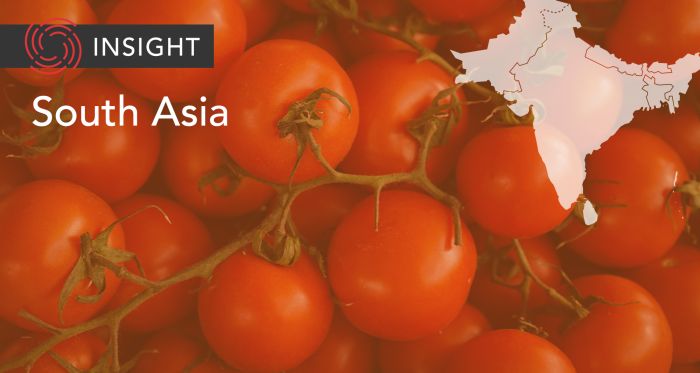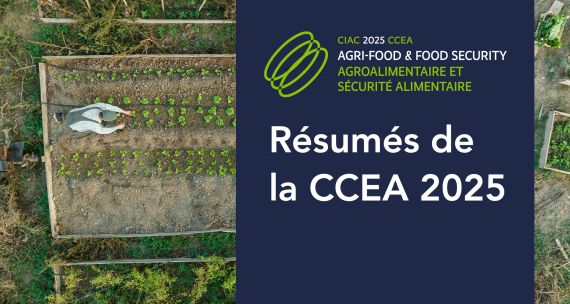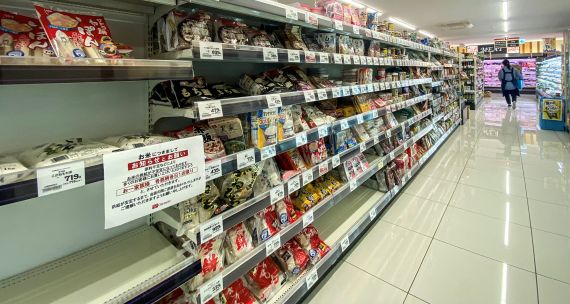The Takeaway
Cyclical heat waves and flash floods have caused a surge in tomato prices in India. The government has implemented several market-stabilizing policies to account for the fluctuating price of tomatoes. However, ongoing food inflation and supply shortages are recurring events in the country, highlighting the growing need for long-term, climate-resilient agricultural planning.
In Brief
Cyclical heat waves and flooding have contributed to crop price fluctuations in India since February. In March, the India Meteorological Department issued warnings for heat waves in central, northeast, and northwest India. Between June and July, the country weathered Cyclone Biparjoy, which left two people dead and 22 injured, cut off electricity in more than 1,000 villages, and caused widespread destruction to houses and vehicles. The combination of heat waves and high rainfall in these regions has resulted in flash floods over the last few months, which has been disastrous for the cultivation of staple vegetables like onions, potatoes, and tomatoes. Subsequently, the top tomato-producing states, particularly in the northern belt of the country, have run into production shortages, causing food prices to soar. In contrast, southern states — including Karnataka and Tamil Nadu — have remained relatively unaffected by flooding and have hiked their produce prices in response to increased demand.
Implications
- Price surge hurts low-income households and food businesses
India is the world’s second-largest producer of tomatoes after China, with an annual production of around 19 million tonnes. But in June and July, tomato prices soared in different parts of the country, reaching up to C$1.61 (100 Indian rupees) per kilogram. Big cities, such as Bangalore, saw prices rise from an average of C$0.40 (25 Indian rupees) per kg in April to C$1.29–1.94 (80-120 Indian rupees) per kg by mid-July. Prices of staple vegetables like onions and potatoes have also skyrocketed. Since tomatoes are a staple ingredient in many Indian dishes, the sudden price hike has affected many households. It has particularly impacted low-income households, which make up 69 per cent of the population and have an average monthly household income of C$388.52 (24,000 Indian rupees). Simultaneously, companies like McDonald's have removed tomatoes from their menus altogether in several northern, central, and eastern regions in India as supply shortages and concerns about produce quality linger.
- Farmers hurt by market volatility and theft
Farmers of staple vegetables such as tomatoes, onions, and potatoes, have borne the brunt of cyclical heat waves and flash floods since February, enduring recurring patterns of shortage and excess. During periods of excess, large-scale tomato theft has been a persistent issue, resulting in losses totalling hundreds of thousands of dollars for farmers. In response to a lack of crime prevention measures, farmer themselves have taken to holding protection vigils. State governments must incentivize long-term sustainable growing methods that account for these fluctuations, while introducing security protections for farmers.
What's Next
- Improving processing capacity
Of all tomatoes produced in India, more than 99 per cent are consumed fresh, while less than one per cent are processed. This is low compared to other large-scale tomato-producing countries such as China (7%), Turkey (17%), Italy (91%), and the U.S. (98%). Processing tomatoes allows for longer storage and would help to increase supply during low-production periods while accounting for excess produce. However, India lacks sufficient processing power, largely due to an unavailability of suitable seed varieties for processing and inadequate infrastructure. Considering that the domestic demand for processed tomatoes is rising at around 30 per cent annually, increasing processing capacity through support from the private sector would help to tackle the unstable market.
- Value-chain development, income assistance scheme
The Union Agriculture Ministry is currently in talks with the Union Food Processing Industries Ministry to take over and implement the latter’s Tomato-Onion-Potato (TOP) scheme, which aims to regulate the value-chain development of TOPs along with 22 other perishable vegetables. The government’s Price Support Scheme, meanwhile, acts as both a market stabilizer and an income assistance program, enabling Indian farmers to sell their produce to the government even if market prices fluctuate.
- Tomato Grand Hackathon Challenge
Recently, the Indian government announced a grand "hackathon" challenge to seek ideas from academics and industry professionals on how to curb rising tomato prices. At the end of the competition, evaluators will test the winning idea for its suitability for large-scale field implementation.
- Agritech developments and future planning
In April 2023, the United Nations Capital Development Fund, Atal Innovation Mission, and top Indian public policy organization NITI Aayog released a report aimed at tackling food security challenges through agritech developments in India. Highlights included the Indian Agri-tech Incubation Network at IIT-Kanpur in Uttar Pradesh, a rainfall-tracking and analysis program in Maharashtra, and a state partnership with IBM to develop tomato price forecasting technology in Karnataka. The report represents a first step towards tackling vegetable shortages through improved infrastructure and indicates the need to integrate climate adaptation within agricultural development initiatives.
• Produced by CAST's South Asia team: Stephanie Lee (Program Manager); Prerana Das (Analyst); Suyesha Dutta (Analyst); and Deeplina Banerjee (Analyst).




